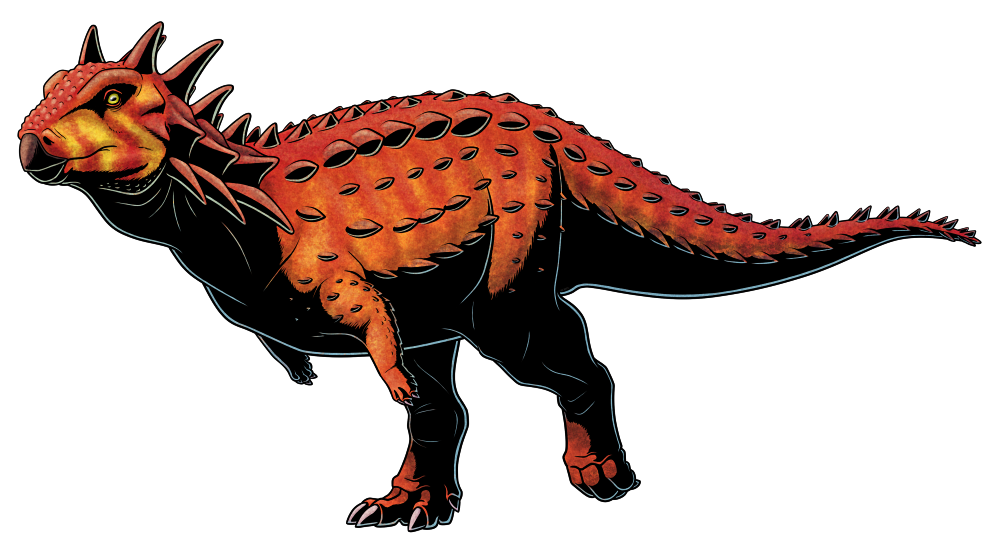The thyreophorans were heavily armored ornithischian dinosaurs, with their most famous representatives being the stegosaurs and the ankylosaurs. Earlier members of the group were all small bipedal animals covered in rows of prickly osteoderms, and until now these “primitive” forms were known only from the early-to-mid Jurassic, around 200-165 million years ago.
But now the recent discovery of Jakapil kaniukura is suggesting a lineage of early thyreophorans actually survived for much much longer than previously thought – all the way into the Late Cretaceous, about 97-94 million years ago.
Just 1.5m long (5′), Jakapil lived in what is now southern Argentina, in an ancient desert with a braided river system. It was bipedal, with a short beak, small arms, and a body bristling with spiky armor, and its unusually deep lower jaw and heavily worn teeth indicate it fed on rather tough vegetation that required a lot of chewing to process.
It’s currently only known from somewhat fragmentary remains, so reconstructions of its full appearance are rather speculative and there’s already been some dispute about whether Jakapil actually was a thyreophoran. One proposal is that it shared a lot of anatomical features with early ceratopsians instead, which if true would make it an incredibly weird armored ceratopsian, and also the first definitive member of that group from South America. But the ceratopsian-like features could also just be due to convergent evolution – and a Jakapil-like dinosaur might actually help explain the only other known dubious South American “ceratopsian” Notoceratops, and the similarly-disputed Australian Serendipaceratops.
But whatever it was – late-surviving basal thyreophoran, southern armored ceratopsian, or even a previously unknown lineage of ornithishcians entirely new to science – it’s an exciting and unexpected discovery.

